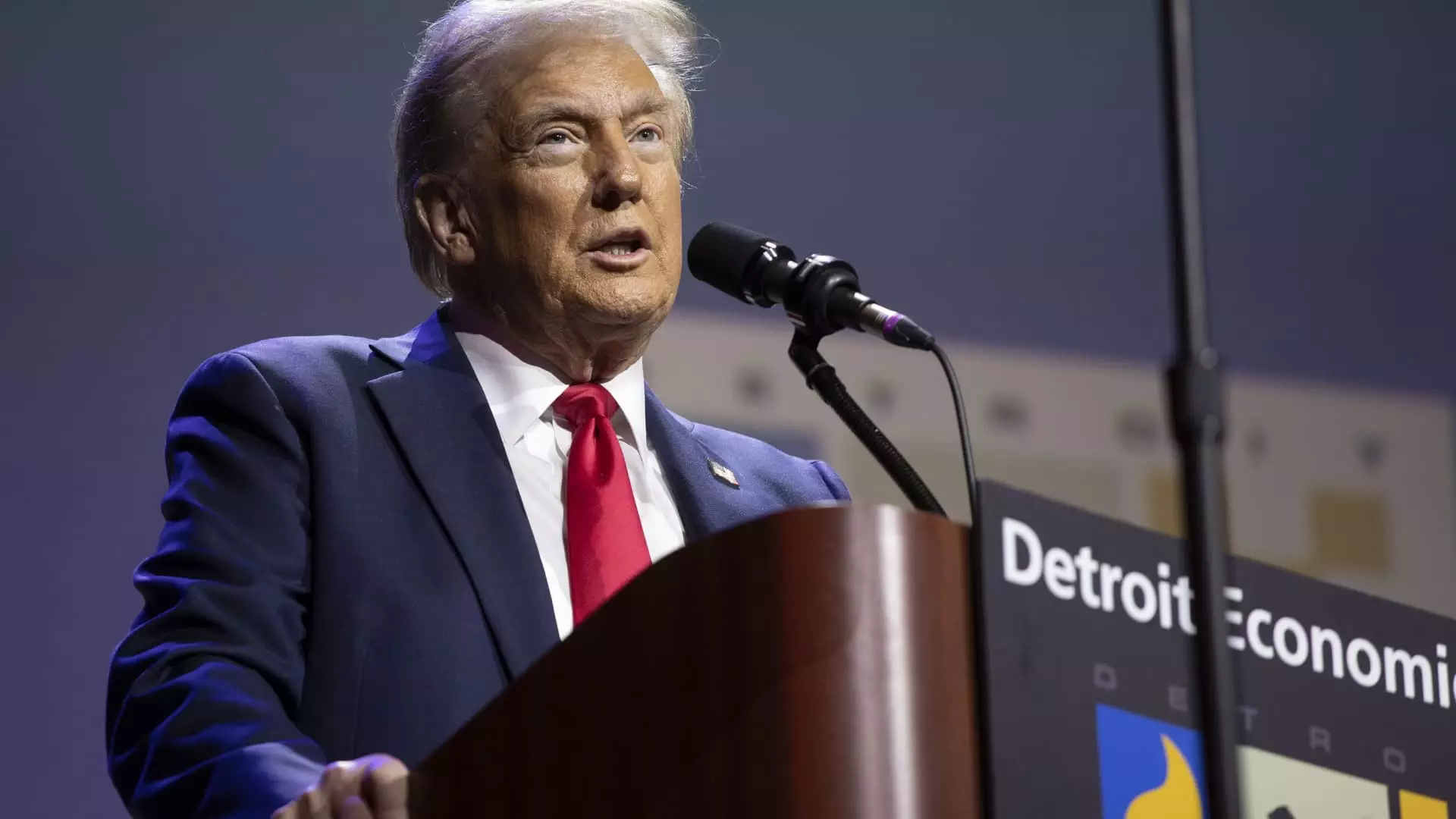The world of trade is often seen as a complex web of agreements and policies that can have profound effects on national economies. In the context of the 2024 presidential election, tariffs have re-emerged as a focal point, particularly through the lens of Donald Trump’s potential second term in office. His longstanding trade adviser, Robert Lighthizer, appears to be laying the groundwork for significant shifts in U.S. trade policy, leading many to speculate about the implications of such changes for American families and the overall economy.
The Dance of Power: Lighthizer’s Influence
Robert Lighthizer, who served as Trump’s U.S. Trade Representative during his first presidency, is reportedly engaging with influential entities on Wall Street. Analysts at Piper Sandler have indicated that Lighthizer has been discussing the possibility of imposing hefty tariffs soon after Trump’s potential reelection, including a staggering 60% tariff on Chinese imports. This development hints at the pivotal role Lighthizer could play in shaping the economic landscape should Trump regain the presidency.
Despite these discussions, Trump’s campaign stresses that no official policy should be assumed without direct confirmation from the former president. This statement reflects a strategic maneuver to maintain clarity amidst the speculation that surrounds Lighthizer’s discussions with investors. It also emphasizes the need for caution; during an election season, political statements can carry a dual purpose, serving both as a strategy for gaining votes and as a means of outlining future economic plans.
The economic ramifications of Trump’s proposed tariffs are at the forefront of expert analyses. Various economists have raised alarms about the dangers associated with such expansive tariff plans, warning that they could lead to higher consumer prices and reduced overall economic growth. In fact, Kamala Harris’s campaign has echoed these concerns, referring to an analysis suggesting that Trump’s tariffs might elevate the tax burden on an average American family by nearly $4,000 annually.
This discourse highlights a critical tension within the political landscape: while Trump champions tariffs as tools for economic resurgence and American job protection, critics fear they might paradoxically result in unfavorable conditions for everyday citizens. The divergence of opinion underscores how tariffs can be wielded as both political currency and as a potential threat to economic stability.
Trump’s approach to tariffs has been notably aggressive. He perceives these economic measures as tantamount to a protective shield for American manufacturing and labor. The ethos behind his proposal is not merely to fortify domestic industries but also to reshape the global economic order in a manner that favors U.S. interests.
Advocates of tariffs argue that by instituting steep levies on imported goods, the U.S. can create a disincentive for foreign production, thus encouraging companies to manufacture domestically. Trump has touted tariffs as a way to not only safeguard jobs but also to generate revenue that could fund tax cuts and bolster government budgets without straining entitlement programs.
However, Trump’s narrative does not align seamlessly with economic realities, as experts warn that such strategies could ignite inflation while also impeding real wage growth. The possibility of imminent legal challenges further complicates matters, illustrating that the pathway to enacting sweeping tariff changes could be fraught with legislative and judicial hurdles.
The discourse surrounding tariffs also addresses the societal impacts of these policies. A significant concern lies in how increased tariffs can affect consumer goods pricing, potentially exacerbating financial strain on households across the nation. As prices rise for imported goods, the burden ultimately passes down to the consumer, challenging the very objective of protecting American jobs by placing additional economic stress on families.
Moreover, Trump’s rhetoric around tariffs often blurs the line between protectionism and isolationism. While presenting tariffs as a strategy for economic revival, it may inadvertently foster a narrative that alienates international partners and affects diplomatic relations. The interconnectedness of the global economy suggests that actions taken in one nation ripple through markets worldwide, often returning to impact domestic economies in unexpected ways.
The potential for a Trump administration’s renewed focus on tariffs raises critical questions about economic stability, consumer welfare, and the intricate dance of international relations. As Lighthizer’s discussions signal a possible return to aggressive trade policies, stakeholders from all sectors—business, government, and consumer—must carefully analyze the impending implications of such strategies. The outcome could redefine American economic policy for years to come, highlighting the delicate balance between protectionist fervor and inclusive prosperity in a complex global landscape.


Leave a Reply